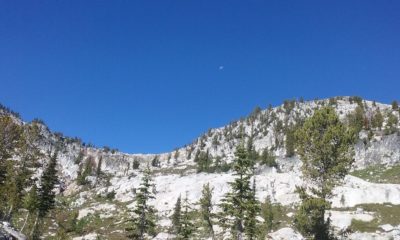
The Half Moon Is High in the Sky
Jul. 25: We are on our second and last night at Pine Lakes. I certainly could drink in the scenery here for more days. However, I am fully accepting of the fact that we have more magnificent places to explore. So we are on the move.
This morning, Dan and I arose early. We joined our fellow trekkers as they milled around the camp gathering for breakfast. Raz had cooked up Swedish pancakes. From what I could tell, they are regular pancakes, served with a variety of sweet toppings on the side. One of them was even made in the shape of a llama! Being out in the woods makes people hungry. They were enjoying the food, which is mostly what matters.
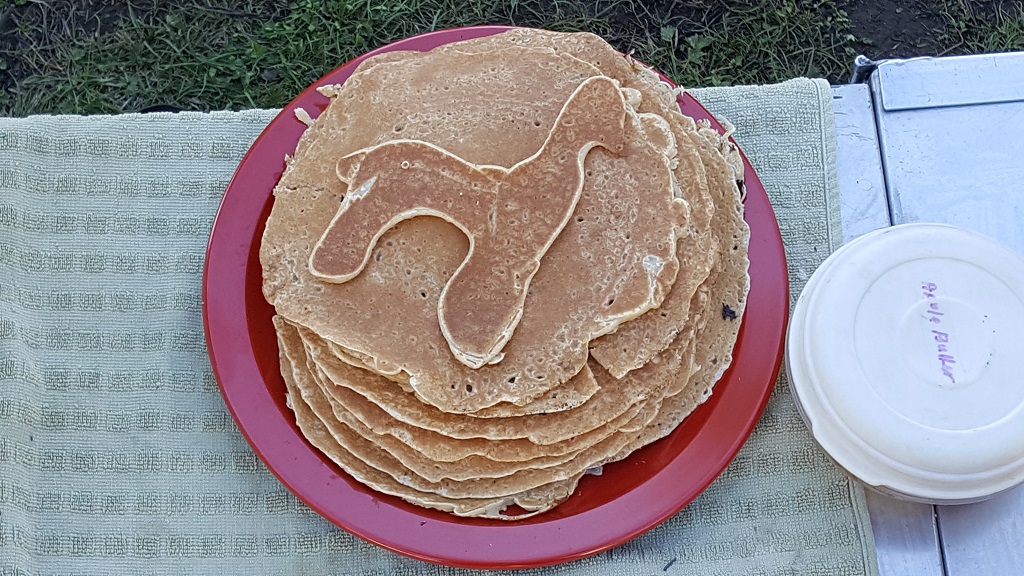
Swedish Pancakes Llama Shaped
It was a leisurely start to the morning including a discussion on what adventures the day held. Raz shared a few options for exploration for the day. One was to do a steep cross country climb to Granite Mountain. Another was to go down to Pine Lakes with an add-on of a hidden valley as a detour. The Portland family took off to Granite Mountain with Jim, one of the wranglers. Another two parties walked down to the lakes, in part being motivated by the Brook Trout there for catch and release fishing.
Dan and I wanted to help with the llamas, so we stuck around camp and did some of our own exploration to make use of the time until Raz was ready to do llama chores. Right behind our tent, stood some granite boulders. They formed natural steps downward following the stream. From a distance, I had spotted a nice little clump of elephant’s head. When we got close, we saw a rock meadow garden with at least a dozen species of wildflowers. Different shades of pink and red and blue and white were juxtaposed. In one way the wildflowers were woven together like a piece of artwork. In another way, each one was distinctive, once we slowed down to take a deeper look.
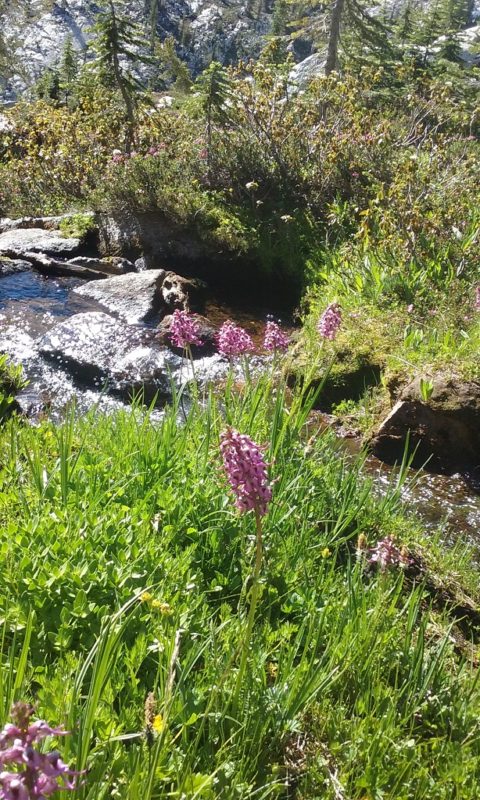
Elephants Head Drew Me In
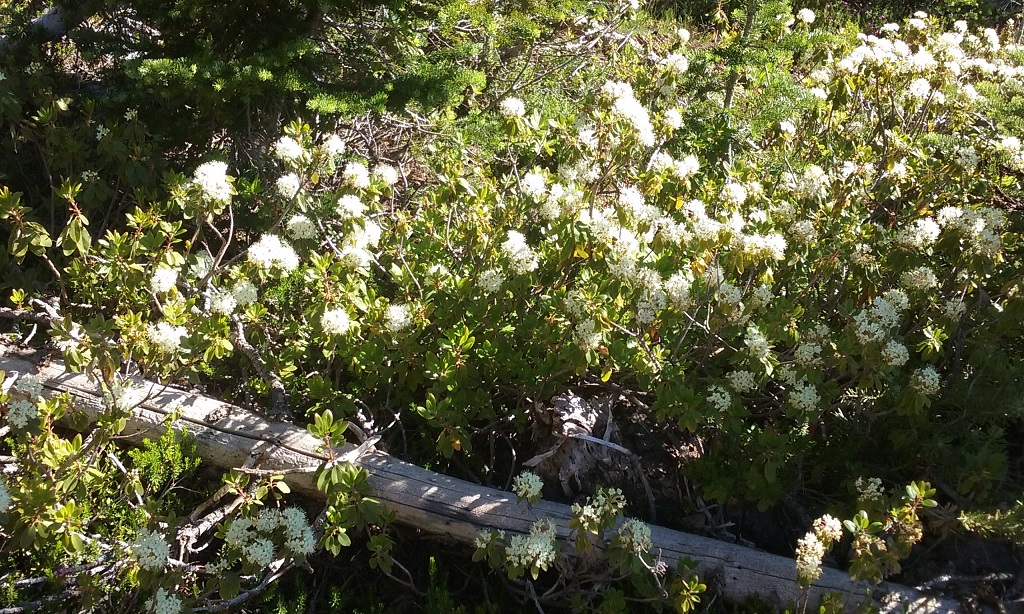
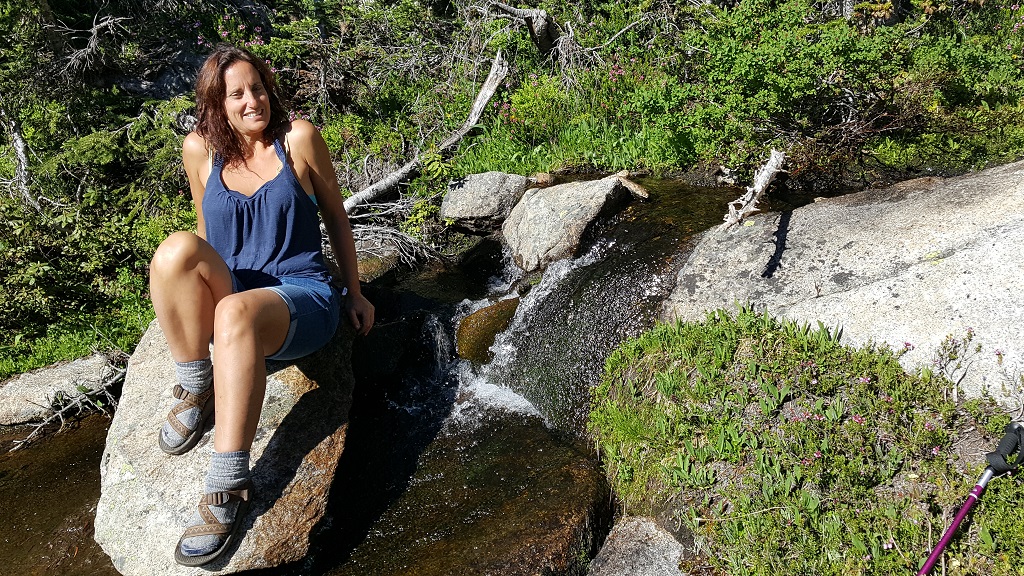
And Other Wildflowers Flourished
Elephant’s head (Pedicularisis groenlandica) an herbaceous plant that grows in the meadows of the Pacific Northwest, as well as the Sierra Nevadas. I first became acquainted with them over fifteen years ago when I took Howie Brounstein’s herbal classes. In addition to gaining an understanding of the ecology and botany of the plant, he taught us about the medicinal uses. Elephant’s head is a nervine which means it calms the nervous system. Sort of like a stronger chamomile. We tinctured it and also dried it, using the dried herb to smoke. It doesn’t get you high, but it’s calming effect is fast acting this way. It can be identified by its many pink flowers that circle the six inch stem, and each flower close up looks like an elephant’s head! Other Pedicularis species look like parrot’s beak and cobra heads. It’s very trippy!
After some puttering around we came back and helped move the llamas to new spots in the same meadow that they were in. This involved unscrewing a big corkscrew from the earth for each one. Then we found a spot where no llamas had been tethered that was soft enough to screw the corkscrew back in. I asked Raz about this practice and he explained that he wanted to spread out their impact. Compared to the cattle, the llamas seemed to have very little impact. But surely, they have some and part of raising and using llamas includes stewarding the land they reside in.
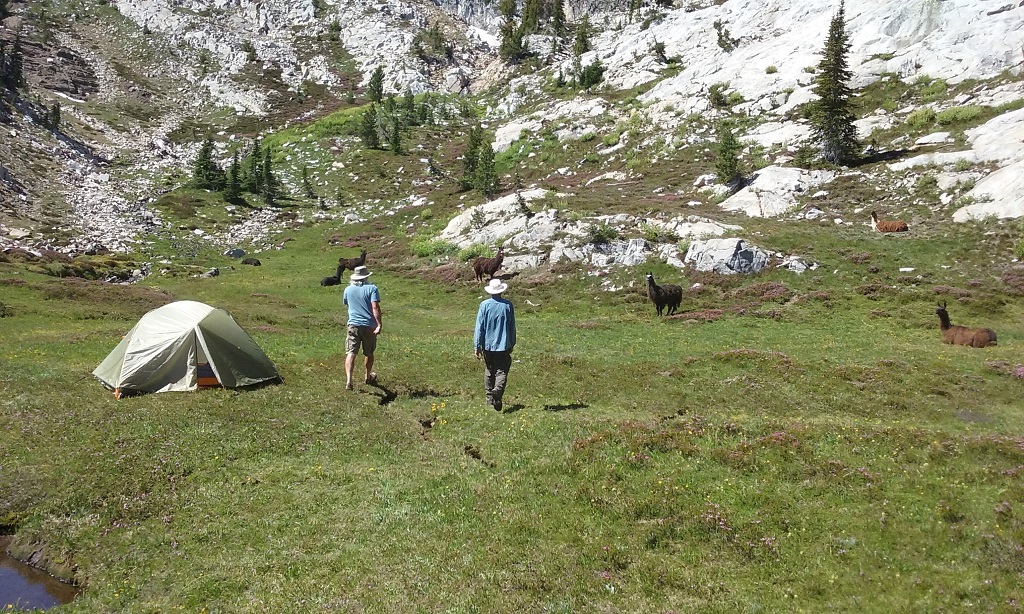
Llama Caring Time
Around 11am Raz, James (the other wrangler), Dan, and I headed down the trail toward the lake. From where we were camped, the lakes looked very close. Yet walking on the trail took close to an hour, because it circled the lakes, as opposed to heading straight down. On the way down, Raz pointed out the solar shower that Jim and James set up. It was in a private area, suspended from a tree. They had even laid down carefully placed rocks for the floor and I joked that it was a custom granite tile job.
Raz shared some of the geology of the Wallowas, which he had learned from a past trip participant. This participant played a key role in developing the theory of exotic terrane, which is widely accepted as explaining much of the geology of the Wallowas. I am no geologist, but here is an approximate explanation of what happened. Millions (billions?) of years ago coral reefs were transformed into layers of limestone that was deposited on the tectonic plate in the Pacific Ocean. This plate butted against the Continental plate on the West Coast of the US and the limestone rode over the top and was deposited where the Wallowas ride. This gives rise the limestone mountains like Cusick Mountain with identifiable corral fossils in the Wallowas. These mountains are juxtaposed with the granite and basalt mountains to give a very complex geology.
Raz also shared tidbits of knowledge about the flora and fauna and recent human history of the region. He is truly a mountain man and knows this area like the back of his hand. Although I should state that Dan clarified that Raz is a Renaissance mountain man. He isn’t about getting out in nature and acting like he owns the place. He is humble and watchful and wise about the place he quite clearly loves deeply. He seems to be a good cross between pragmatic and sensitive.
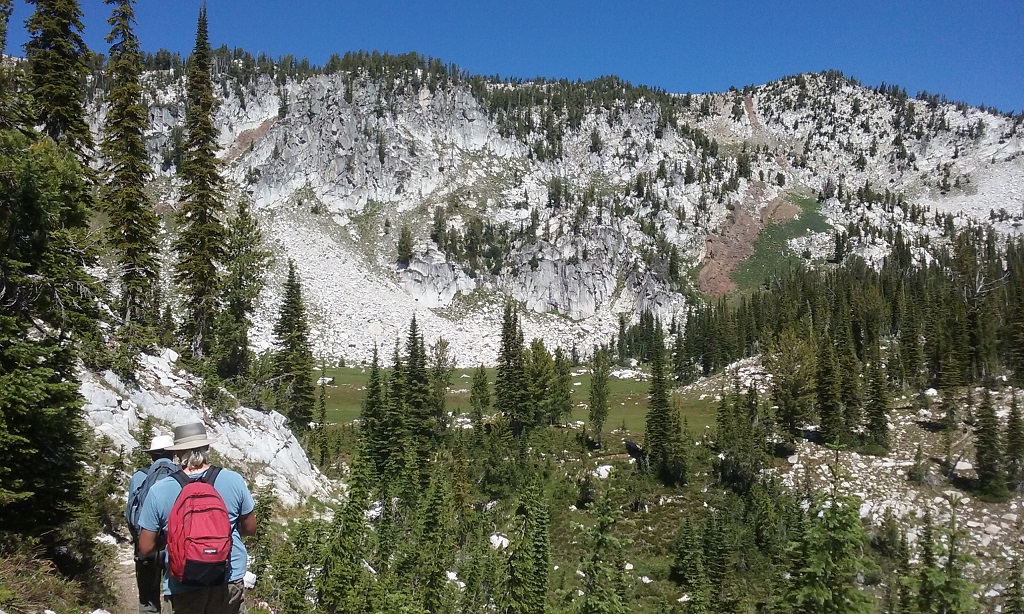
Toward the Lake We Marched
Although we were all itching to get to the lake to cool off, we opted to see the hidden valley. Raz had discovered it many years ago from looking at topographic maps. We turned off the trail, headed up toward the mountain, and traversed around a ridge. We were delighted when it opened up into the lusciously heather carpeted meadow. Running through the meadow were lots of tiny meandering streams that joined pathways and flowed in unison, like the arteries of our bodies. The hanging valley we explored was glacially carved and was the result of different rates of erosion from surrounding tributaries. The valley is essentially flat and meets the mountains above Pine Lakes at a 90 degree angle, instead of a gradual decline. Shooting stars, seemingly dense as the night time sky, carpeted portions of the valley. Violets and buttercups filled in the gaps, creating a purple and yellow collage. Even some toads danced in the warm summer light. Their ribbit caught me off guard at first, but quickly became endearing.
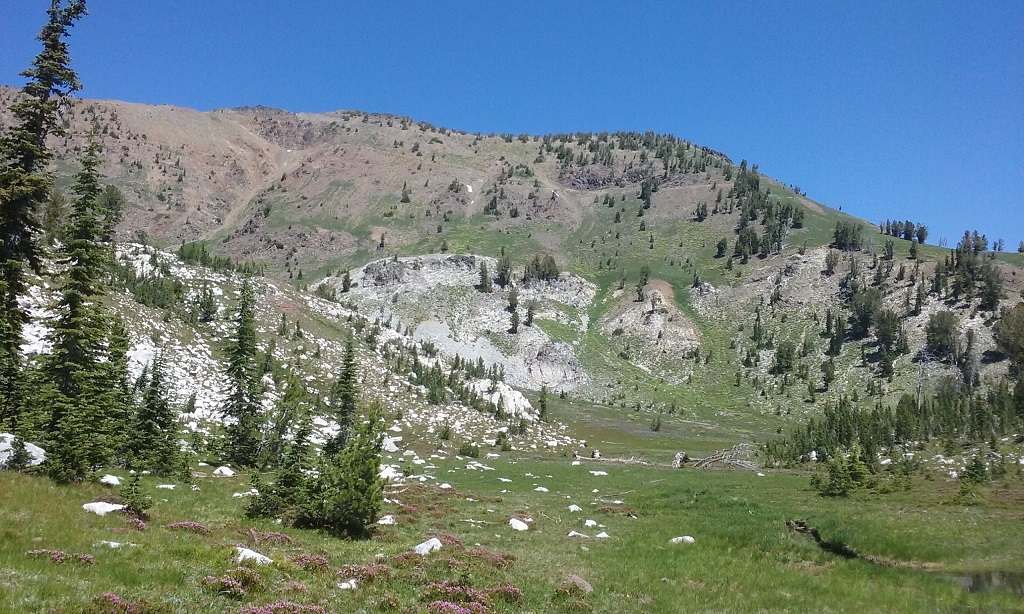
The Glacially Carved Hanging Valley
Time had a way of ticking on and we realized it was almost 12:30 and Raz had said we’d be down to the lake with lunch by then. So we took a few extra moments to drink in the richness of the spot and hoofed it down to the lake. There was a dam between the middle and lower Pine Lake and that is where we all met for lunch. The dam is part natural and part human made. In the years before the Eagle Cap Wilderness was established, ranchers had fortified the natural dam turning the lake into an irrigation source. Since their dam was pre-existing, it was grandfathered when the wilderness was established. So every year in late summer, the lake gets pretty significantly drained. The take away is: visit early!
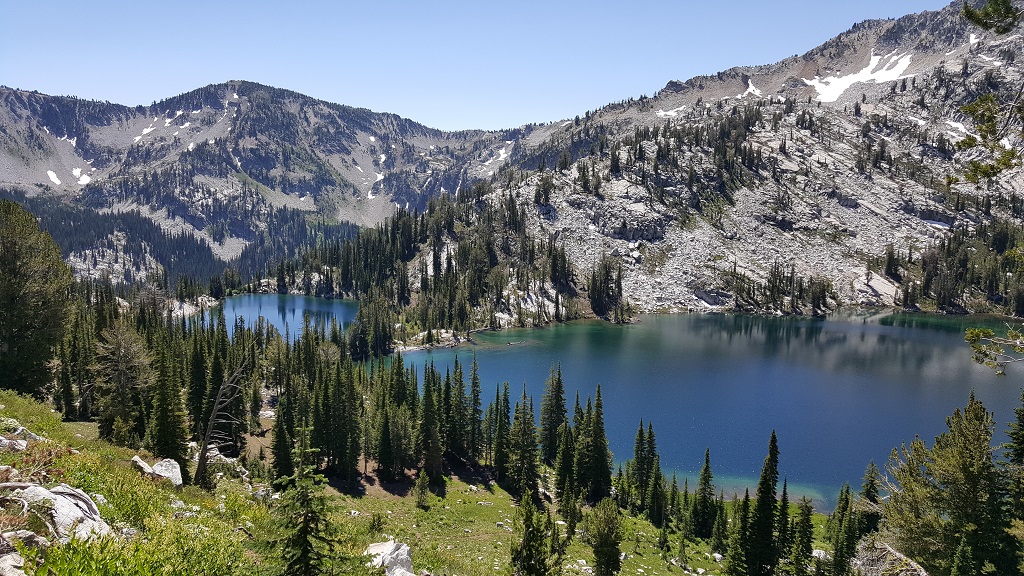
Pine Lakes Could Wait No Longer on a Hot Day
Some casual getting to know you conversation with another camper revealed that we shared a Eugene connection. First she said that I looked familiar. Then she shared that she kayaked when she lived in Oregon and I asked her about it. She said that until two years ago, she lived in Eugene. So do I! She stated that she lived right in the heart of the Whiteaker neighborhood. So do I! Then she let me know, yeah, I lived right around the corner from Papa’s Soul Food. So do I! When I described which home is mine, she said that she was at a Whiteaker New Year’s Day party at my home a few years ago, which would explain why I looked familiar. It really was too weird!
The next few hours were spent frittering away the afternoon walking along the wooded lakeside and laying on the warm rocks. There was bantering about who was crazy enough to go swimming in the ultra-brisk lake. The kids were the first ones to do it. Dan and I finally bit the bullet and went in ourselves on a private spot a ways around the lake from the lunch spot. It was cold as the dickens and we must have looked ridiculous swimming as fast as possible to get to shore and thaw out back on the warm rocks. Once we were out, the cold shock was replaced by a warm wave of exhilarating energy that pulsed through our bodies. We thought to bring a couple of books down from camp and we read aloud to one another some fun passages.
Raz and the rest of the group passed by us when he was leading the group on a shortcut back home. He called our names a few minutes before they reached us, to give us time to get ready to depart. A twenty minute scramble up the rocky mountainside replaced a 60 minute hike on a trail. There were some hairy parts, we’ll admit it. But the guides took careful note to make sure we all arrived back at camp safely. On the way up, we discovered another very impressive stand of elephant’s head. It continued to sprawl out along the stream for hundreds of feet below where Dan and I had explored in the morning In addition, St. John’s Wort was just beginning to bloom and the gentian was peeking through some of the taller grass. A lot of herbal medicine was growing in such a small amount of space. I could have harvested a year or more worth of medicine with taking very few steps.
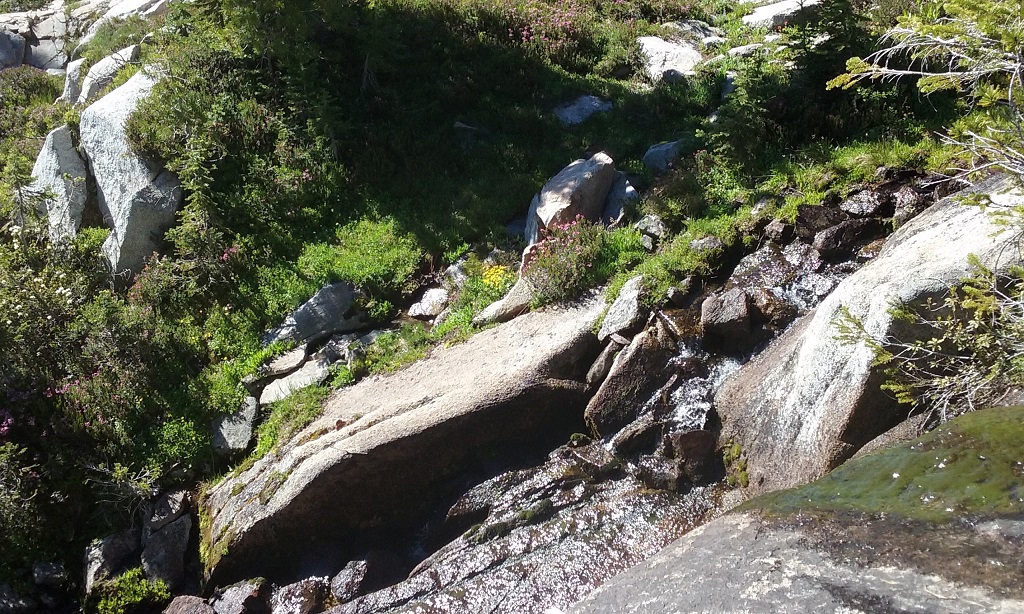
It Was a Steep Climb Back to Camp
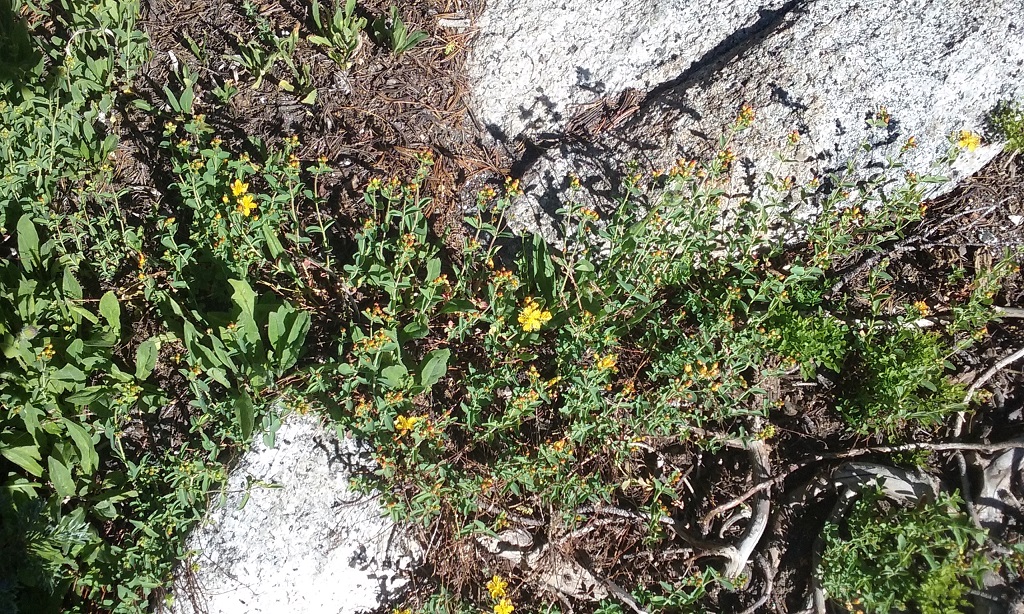
St. Johns Wort Is Just Coming on Here
Raz didn’t waste any time before making gin and tonics. He collected snow from nearby so the drinks were on the rocks. I have to admit it was pretty bourgeois for the Eastern Oregon wilderness, 8500 feet up in the air. However, it was definitely a fun touch. Admittedly, it was easy to forget about the llamas, since they just chill out in an adjacent meadow and don’t make any noise. But we didn’t want to do that. So instead, we went around the circle paying homage to the hard working, low maintenance llamas that made this styling camping all possible.
Dinner was a fabulous fresh veggie stir fry with quinoa. Louise had made some Thai peanut sauce which was tasty and tied the meal together. Everyone agreed that we were eating very well for wilderness trekking.
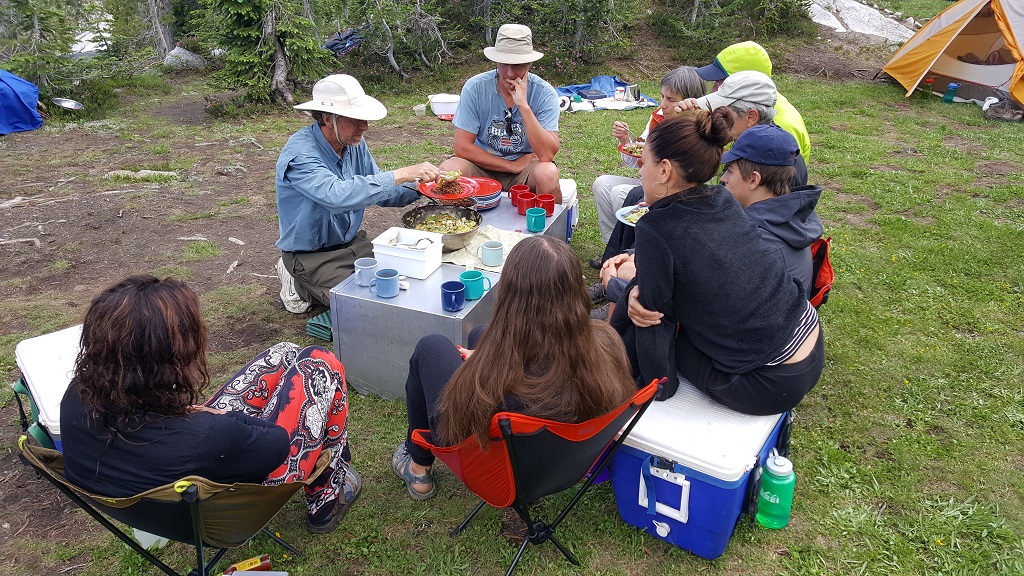
Glamping
After dinner, there was still plenty of light left and Dan and I decided to go for a walk. We walked up past the llamas, hit the trail, and began to admire the rock structures big and small which were accentuated by the fading light. Many of them were glacially polished stones. Knurled, sculptured, long dead white bark pines punctuated the landscape. In this dry and high climate, trees are very slow growing, and, once they die, they are equally as slow at decomposing. Facing east and into Idaho, we could see the Seven Devils Mountains Range. All the while, we observed our camp in miniature in the valley below us. As the light faded, we made our way back toward camp and here we sit, sharing today’s adventures with you.
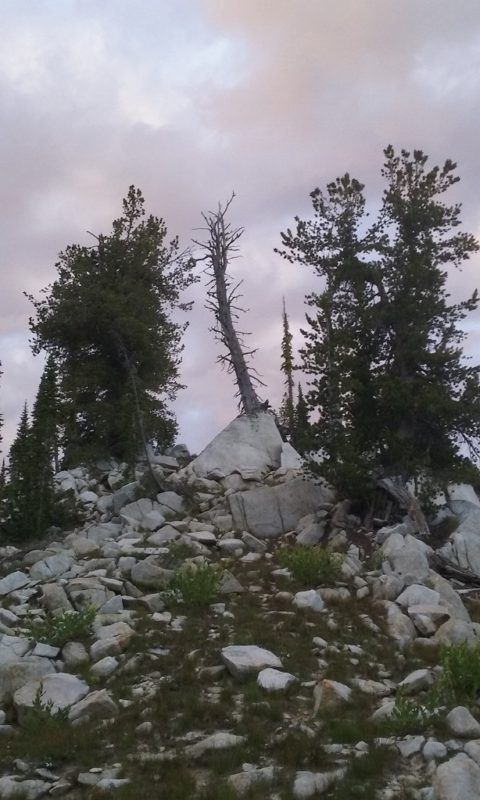
Even the Dead Trees Are Regal
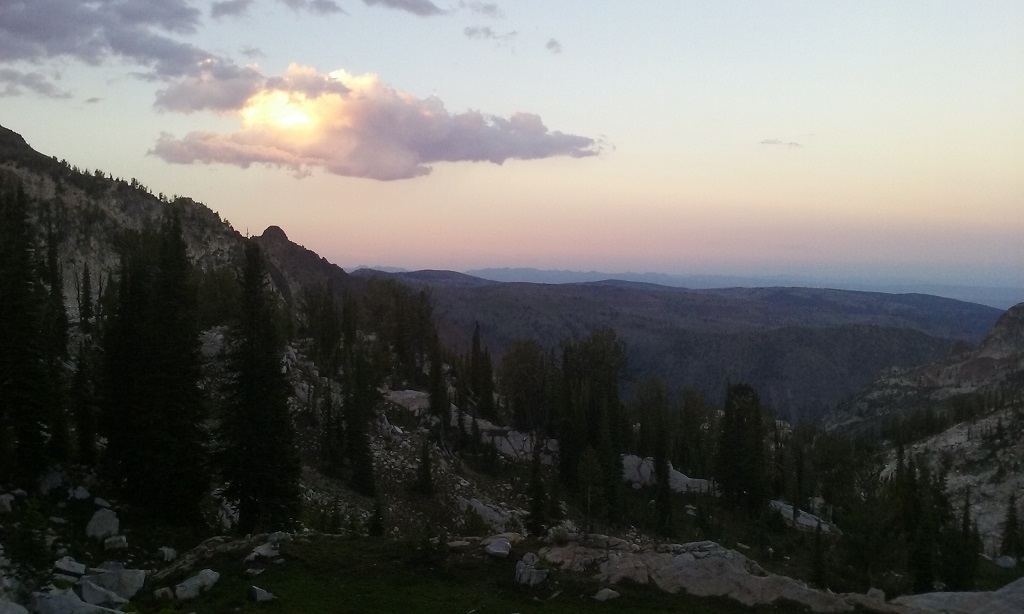
The Mountains in the Distance Are in Idaho
